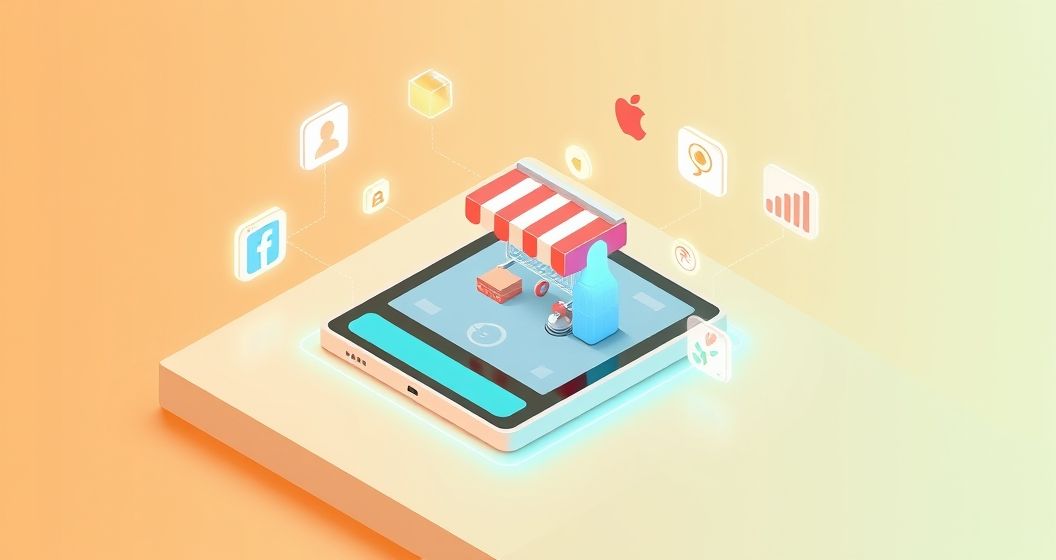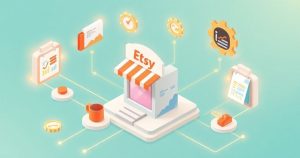Running a successful Etsy shop requires more than just creativity and unique products. As your business grows, manual tasks like managing inventory, processing orders, and marketing can become overwhelming. This is where Etsy integrations come in, serving as powerful tools to automate processes, improve efficiency, and unlock new potential for scalability. By connecting your shop to specialized third-party applications, you can streamline your workflow, save valuable time, and focus on what you do best: creating.
What Are Etsy Integrations and Why Do They Matter?
Etsy integrations are software applications that connect your Etsy store to other platforms or services. This connection allows for the automatic transfer of data, such as orders, customer information, and product listings. The primary purpose is to eliminate repetitive manual work and centralize your business operations. Instead of updating inventory in multiple places or manually copying shipping addresses, an integration handles these tasks for you, reducing the risk of human error and freeing up your schedule for more strategic activities.
The importance of these tools cannot be overstated for sellers aiming to scale. They transform a passion project into a streamlined e-commerce operation. By automating key functions, you can process more orders, manage a larger product catalog, and reach a wider audience without a proportional increase in your workload. Ultimately, leveraging the right Etsy integrations is a strategic move that enhances accuracy, improves customer satisfaction, and builds a more resilient and profitable business model for long-term success.
Key Categories of Etsy Integrations for Growth
To effectively scale your shop, it is helpful to think about integrations in terms of the business problems they solve. Most tools fall into a few key categories, each designed to optimize a specific part of your workflow. From production to post-sale communication, these applications provide targeted solutions.
1. Print-on-Demand (POD) Fulfillment Services
Print-on-demand is a game-changer for artists, designers, and creators. Services like Printful and Printify integrate directly with your Etsy shop, automating the entire fulfillment process. When a customer purchases a t-shirt, mug, or poster from your store, the order is sent directly to your POD partner. They print, package, and ship the product to the customer under your brand. This model eliminates the need to hold physical inventory, reducing financial risk and logistical headaches.
While profit margins on POD products are typically lower than self-produced goods due to production and shipping costs, the scalability is immense. You can offer a vast range of products without any upfront investment. For example, a design can be sold on dozens of items, from apparel to home decor. These Etsy integrations handle the most time-consuming parts of the business, making them ideal for sellers who want to focus purely on design and marketing.
2. Multi-Channel E-commerce Platform Syncing
Many successful sellers expand beyond a single platform to maximize their reach. If you sell on both Etsy and your own website (e.g., built on Shopify or WooCommerce), managing inventory can be a significant challenge. Selling an item on one platform requires you to manually update the stock count on the other. This can lead to overselling and disappointing customers. Multi-channel syncing integrations solve this problem by creating a centralized inventory system.
These tools connect your Etsy shop to your primary e-commerce platform, ensuring that when a sale is made anywhere, stock levels are automatically adjusted across all channels. This seamless synchronization prevents stockouts and provides a single dashboard to manage orders, products, and customers. It professionalizes your operation, improves efficiency, and allows you to confidently grow your brand presence across multiple marketplaces without creating logistical chaos.
3. Shipping and Order Management Automation
Shipping is one of the most labor-intensive aspects of running an online store. Manually copying addresses, purchasing postage, and sending tracking information is time-consuming. Shipping management platforms like ShipStation, Pirate Ship, and Shippo integrate with Etsy to pull in order information automatically. They allow you to batch-print hundreds of shipping labels in minutes, often providing access to discounted postage rates that save you money on every order.
Beyond printing labels, these tools streamline the entire fulfillment workflow. They can generate branded packing slips, send automated shipping confirmation emails with tracking numbers to customers, and provide a consolidated view of all your pending shipments. By using these Etsy integrations, you can significantly reduce the time spent on fulfillment, minimize shipping errors, and provide a more professional and timely experience for your buyers, which often leads to better reviews.
4. Accounting and Financial Management
Keeping your finances in order is critical for any business, but it is often a dreaded task for creative entrepreneurs. Accounting integrations like QuickBooks, GoDaddy Bookkeeping, or Xero automate the process of tracking your shop’s financial health. They connect directly to your Etsy account to import sales data, fees, material costs, and other expenses. This eliminates the need for manual data entry into spreadsheets, saving hours of work and ensuring greater accuracy.
With this data, the software can generate real-time profit and loss statements, categorize expenses for tax purposes, and provide a clear overview of your revenue streams. Come tax season, having all your financial information neatly organized is invaluable. These integrations help you understand your true profitability, make informed business decisions, and maintain compliance with financial regulations, transforming bookkeeping from a chore into a powerful strategic tool.
How to Choose the Right Integrations
With so many options available, selecting the right Etsy integrations can feel daunting. The best approach is to start by identifying your biggest pain points. Are you spending too much time on shipping? Is inventory management becoming unmanageable? Pinpointing your primary bottleneck will help you prioritize which type of tool will provide the most immediate benefit. Once you know your needs, research reputable providers in that category and read reviews from other Etsy sellers to gauge their reliability and ease of use.
Budget is another crucial factor. Many integrations offer tiered pricing plans, including free versions with limited features. It is wise to start with a free or low-cost plan to test the software and ensure it fits your workflow before committing to a more expensive subscription. Finally, always check for compatibility and ensure the integration is officially supported by Etsy. Starting small with one or two key integrations is a sensible way to begin automating your business without becoming overwhelmed.
Conclusion: Scaling Your Business Strategically
Etsy integrations are not just about convenience; they are fundamental tools for strategic growth. By automating the repetitive and time-consuming tasks associated with running an e-commerce business, they empower you to shift your focus from daily operations to long-term strategy. This includes developing new products, refining your marketing efforts, and enhancing your brand. Adopting the right set of tools allows you to build a more efficient, accurate, and scalable business that can thrive in a competitive marketplace, turning your creative passion into a sustainable enterprise.






